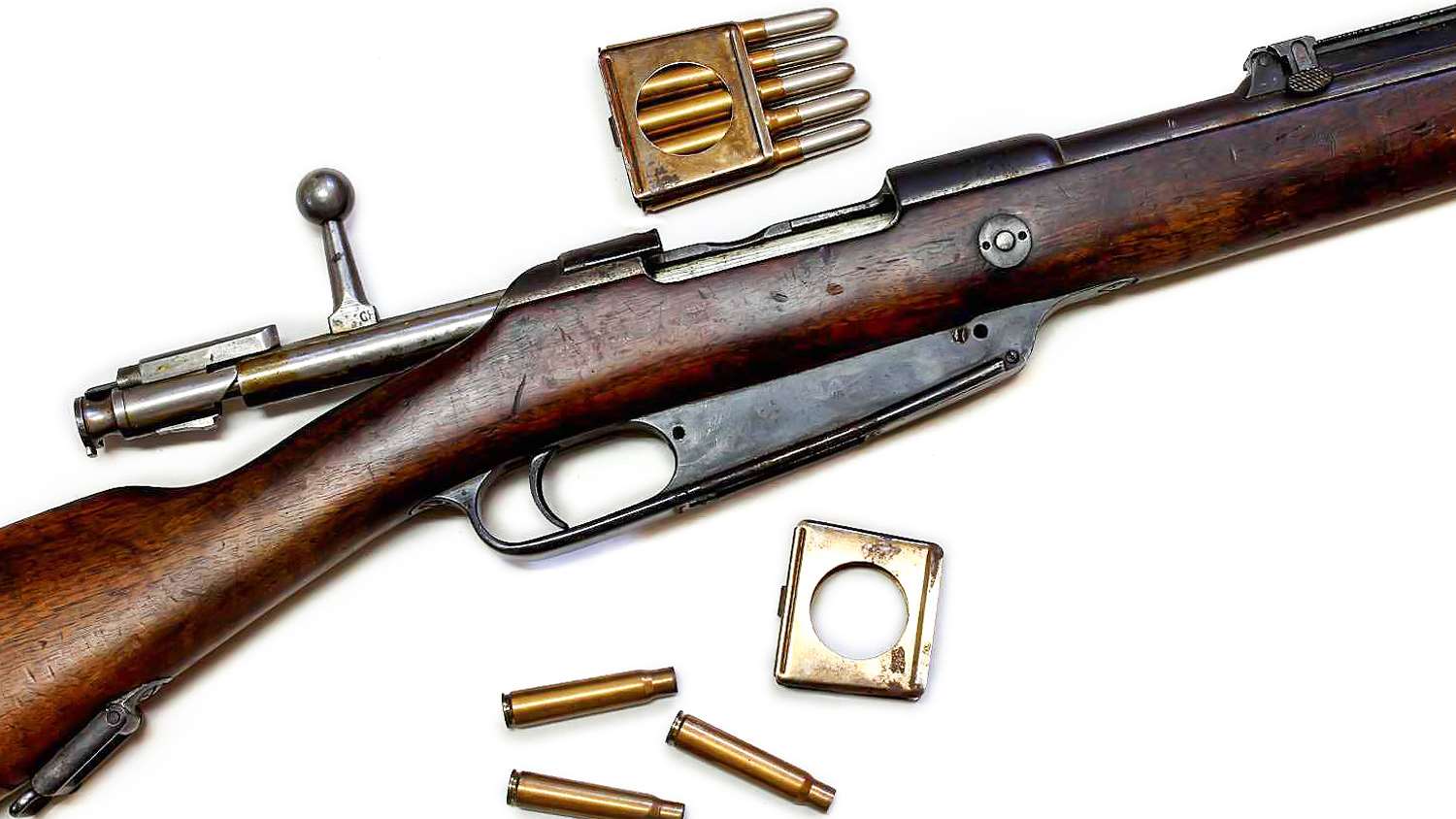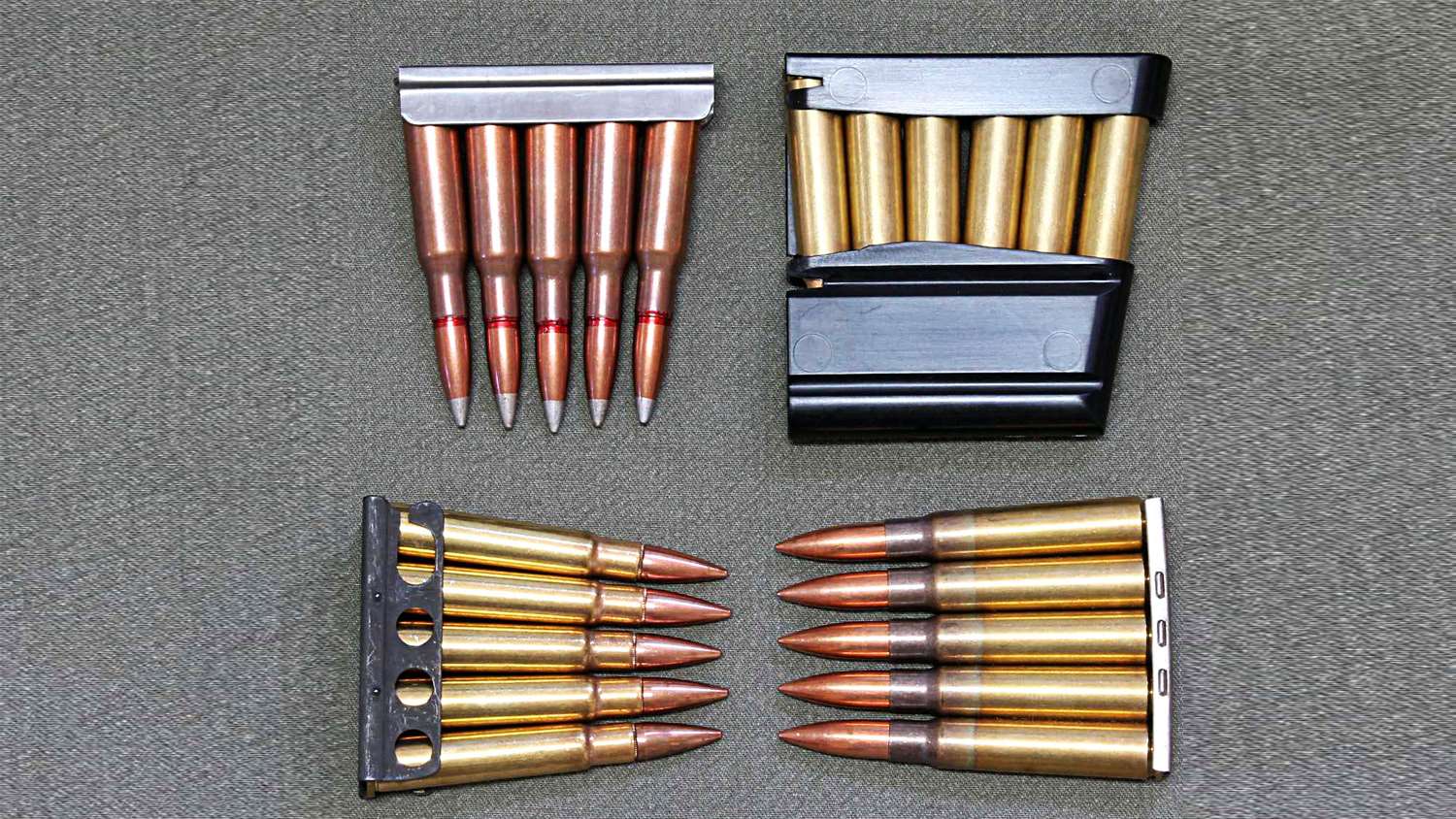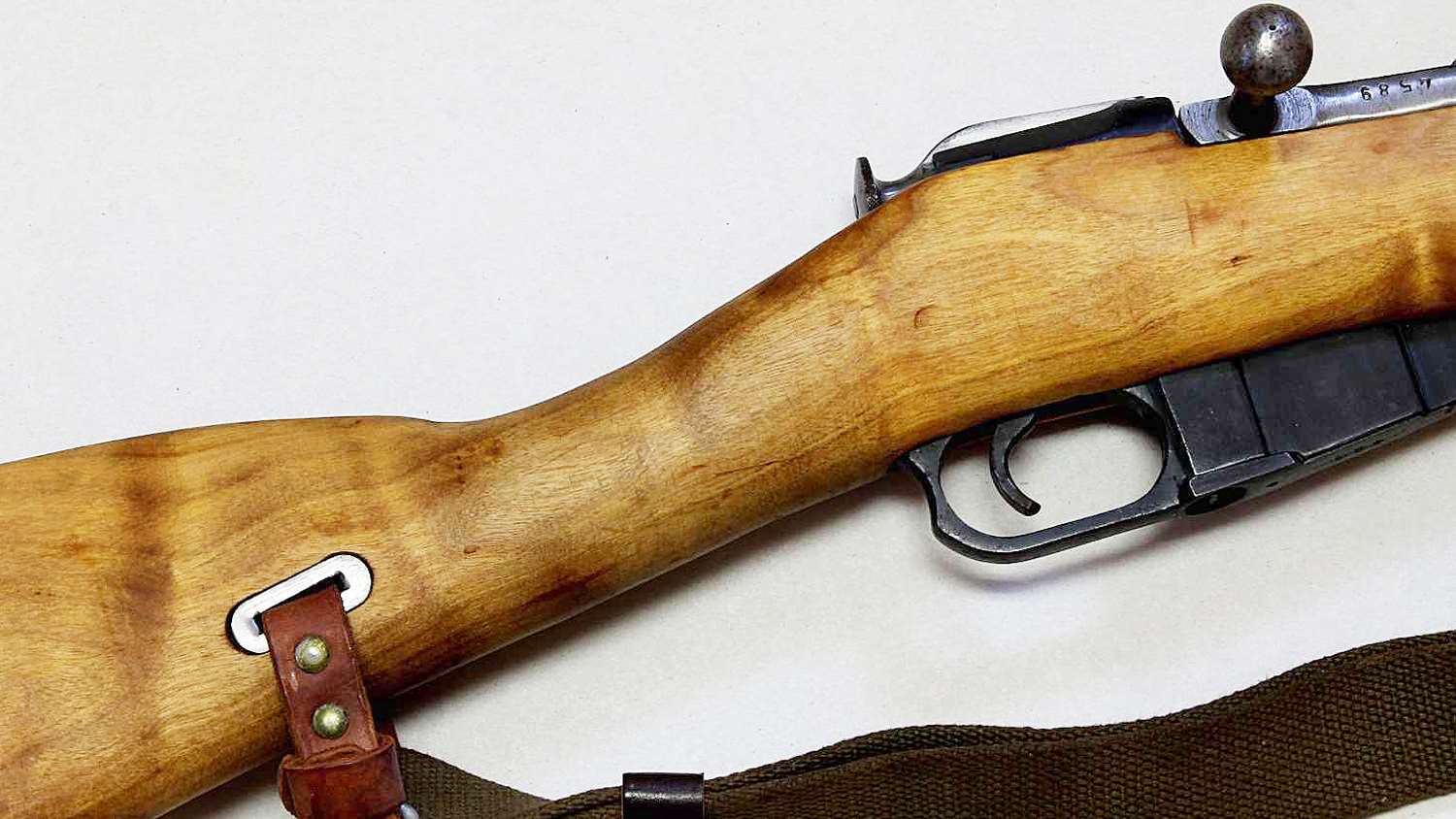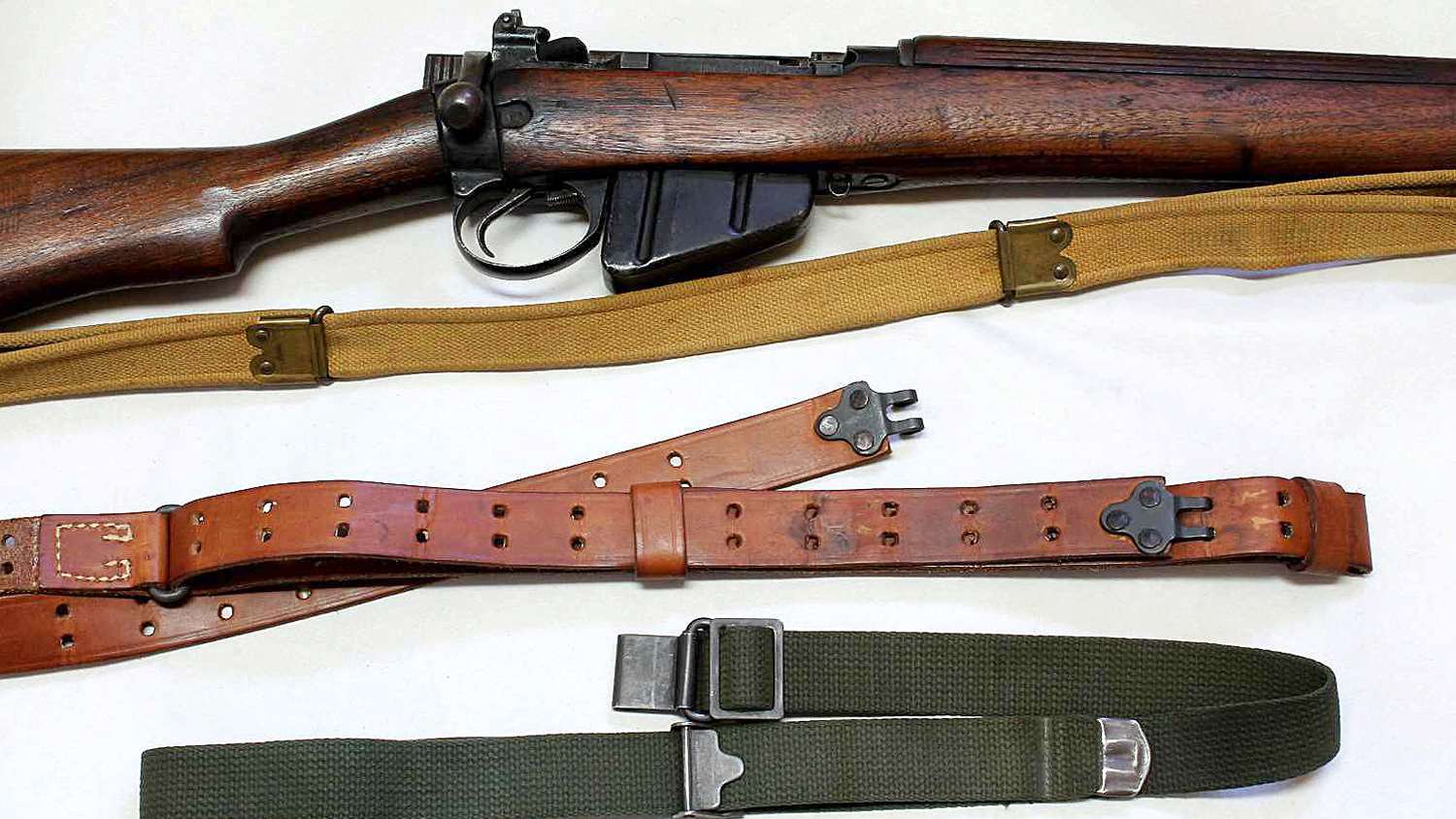
The article title here assumes the reader may be unfamiliar with the details of Vintage Military Rifles and VMR competition, and yet may be an experienced high power competitor. Here’s to hoping I can successfully walk this thin line between leaving the unacquainted behind and boring the experienced shooter.

What we’re choosing is a vintage military rifle that conforms to the Civilian Marksmanship Program’s description of a Vintage Military Rifle for As-issued competition. To wit: a bolt-action repeating rifle that was in general issue to a foreign military, plus the U.S. Krag-Jorgenson and M1917 rifles. While that seems like a mighty big playing field, we can settle on a few best possibilities when we approach it systematically. CMP does not allow any accurizing of As-issued competition rifles, so a careful look at the various rifles’ features is most important. That said, rules permit two minor modifications to sights and sling mounting, and we’ll take those into account, as well.
Popularity
Listing every military bolt gun ever issued to troops throughout the world would make a mighty lengthy list, so let’s consider only those most popular with VMR shooters. Since much of that popularity is based upon the availability of both rifle and ammo, we will have weeded out the hundred arcane and problematic, though still eligible, rifles. The rifles most seen at VMR matches are:
- Model 98 Mausers and derivatives in 8x57mm and, to a lesser degree, 7x57mm. Model 98s in other calibers are also out there, but tend to be the bailiwick only of handloaders.
- Mosin-Nagant M91 and derivatives M91-30 and M44, 7.62x54R.
- Swedish Mausers M96 and M38, 6.5x55.
- No.1 and No.4 Lee-Enfield (SMLE), .303 British.
- M1917 “Enfield,” .30-06.
- Swiss K-31, 7.5x55.
- P14 Enfield, .303 British.
- Krag-Jorgenson, .30-40 Krag.
That’s very roughly in order of popularity based only on my subjective observation. Note the absence of the extremely popular M1903/M1903A3 U.S. Springfield rifles. These rifles, with rear sight windage adjustments the foreigners typically lack, have their own playing field separate from the VMRs called, appropriately, “As-issued Springfield” competition. Don’t be confused when you see Springfields on the same firing line as the VMRs—though they all shoot together, at the end of the day the match host scores VMRs and Springfields in their appropriate separate categories.
As-issued, no mods
Again, while rules do permit a few modifications, let’s look first at the physical characteristics of unmodified rifles. The important factors to consider when choosing are:
- Rifle availability
- Ammo availability
- Sights
- Triggers
- Sling mounting
- Inherent precision
- Personal motivation
The availability of the rifles listed is a given—that’s why they made the list. So is their ammunition and reloading components; to this statement we add the caveat that Mauser cartridges other than 7x57 and 8x57 can be more difficult to acquire. For all the VMRs listed, new factory ammunition is readily available, much of it Boxer primed and therefore of interest to the handloader. Hornady makes Vintage Match ammunition in most of the previously listed calibers, which can cut group sizes in half at 100 yards. So can Creedmoor’s .30-06 Springfield Match ammo. Also, a smattering of milsurp ammunition remains available, especially the 8x57mm and 7.62x54R.

Sights and mods
We covered VMR sights in detail in a previous article. Among VMRs, lowest rear sight settings of 200 and 300 meters is so common that the ones bottoming out at 100 meters can be counted on the fingers of one hand. On those fingers we can tick off the Swiss K-31 as consistently sporting a 100 meter rear sight setting. Many K98 Mausers also have a 100 meter rear sight setting, as do some of the Mosin-Nagants. The M1917 ladder rear sight bottoms out at 200 yards when upright; laid flat the “battle sight” is set for, ostensibly, 400 or 450 yards (depending on who you ask).
The 100-yard zero is important if we plan to occasionally compete at that distance on reduced NRA targets, otherwise we’ll have to change our sight picture to “shoot a gap” with the six o-clock hold. The solution for 200- and 300-meter rear sights is to install a taller front sight and then through a trial-and-error process with our chosen ammunition, shoot groups and file down the front sight to achieve a 100-yard elevation zero.
Because VMR rear sights typically have no windage adjustment, we drift the front sight left or right in its dovetail for a windage zero.
If you have trouble seeing a barrel-mounted rear sight, try the British No.4 SMLE or M1917 with receiver-mounted aperture sights.
Triggers
Battle rifle triggers are just that—for battle, not for precision target shooting. Rules require VMR triggers weigh a minimum of 3.5 pounds and permit the “careful fitting of parts,” so we can lighten and smoothen triggers for better shooting. Because many VMR triggers are simple, the job is doable by the mechanically inclined person who can follow instructions. However, an improper trigger job can create a dangerous unintentional discharge situation so, really, it’s best left to a professional.
Many VMRs have good enough As-issued triggers; the K-31 and the Swedes in particular have decent trigger pulls. Others could use a bit of help.
Slings, mounting and mods
Slings, too, we’ve covered in an earlier article. Original slings for old rifles can be impossible to find or may be price-prohibitive, so As-issued rules allow use of the ubiquitous American leather M1907 sling or the M1 web sling on any VMR. These slings will readily attach to all the above listed VMRs except the Mosin-Nagant, which has no sling swivels. Instead, slots pierce the rifle stock to accept a small “dog collar” that in turn accepts the sling, so we must have the dog collars to mount a U.S. sling. The rulebook has no provision for mounting the sling to the Mosin-Nagant in any other fashion. The Mosin-Nagant is the only VMR rifle with such a unique sling requirement.

A significant number of European VMRs (considered carbines back in their day) mount their slings on the left, rather than at the six o’clock position. This arrangement allowed a cavalryman, artilleryman or mountain soldier to more comfortably sling the rifle/carbine across his back, keeping the bolt handle out of the way while he used both hands for other tasks. When slinging-in for target shooting, this arrangement tends to cant or pull the rifle to the left, so rules permit modifying these lefties to position the swivels under the rifle at the six o’clock position if it really bothers you.

Inherent precision
This factor is as difficult to nail down as raspberry gelatin, but in general we can attribute it to a happy conglomeration of the above mentioned mechanical aspects of sights, slings and triggers, as well as a history of well-made barrels and ammunition. Among the above rifles, the 6.5x55 Swede and 7.5x55 Swiss have the best reputations for inherent precision (accuracy). Mosin-Nagants of Finland, armory fitted with superior Sako barrels, share that reputation.
Two more
Two other factors worth mention are recoil and chargers (stripper clips). Battle rifles have recoil and there’s nothing within the rules we can do to alleviate it. Recoil is subjective, and what’s okay with one person may be too much for the next. The only VMR that comes to mind that may have less perceived recoil than others is the Type 38 Arisaka rifle and its relatively mild 6.5x50 cartridge. Of course, handloaders can reduce the recoil of any rifle via light loads.
We need chargers for reloading magazines in the rapid fire stages. Stripper clip type chargers are still readily available for most VMRs, but not so much for those like the M1888s and Carcanos that require en bloc clips. Newly-made polymer chargers are available for the Swiss K-31.
What is your motivation?
To summarize, if you’re selecting a rifle strictly for 200-yard competition and you don’t wish to modify it, any VMR with a six o’clock sling mount and a 200 meter lowest rear sight setting will be competitive. The easiest DIY mod is to install and file down a taller front sight for 100-yard shooting. Moving sling swivels is a little more complicated, and will also devalue the rifle. If you purchase a Mosin-Nagant, be sure to get the sling dog collars with it. Among trigger jobs, the Mausers are probably the easiest and instructions abound.
It’s always best to match the tool to the purpose. We weeded out a great many historically interesting rifles at the beginning of this examination, and now let’s weed them back in, acknowledging first that we don’t have space to name every specific rifle eligible for VMR games.
CMP As-issued Games are not intended for the highly competitive soul, they are really for shooters who want to shoot comparatively inexpensively, as well as to experience a bit of living history in their hands. Maybe the person of Hungarian descent wants to shoot the M95 Steyr carbine, accepting the heavy trigger and stout recoil make it non-competitive with the popular choices. Another may feel the Japanese Arisakas are better than their “clunky” reputation and shoots his to remind us that countless WWII Americans had to face them. Perhaps a shooter inherited a father’s or grandfather’s wartime “bring-back” and he competes with it out of nostalgia or sentiment. Regardless of their reasons, many compete with the old battle rifles, not because they pursue a win, but because they want to shoot with others who share their interest. For them, choosing a VMR is easy—it’s one they already own.


































